This is Great! Thank you MyHeritage.
Major Upgrade to the MyHeritage Chromosome Browser for Better Exploration of DNA Matches
- By Aaron
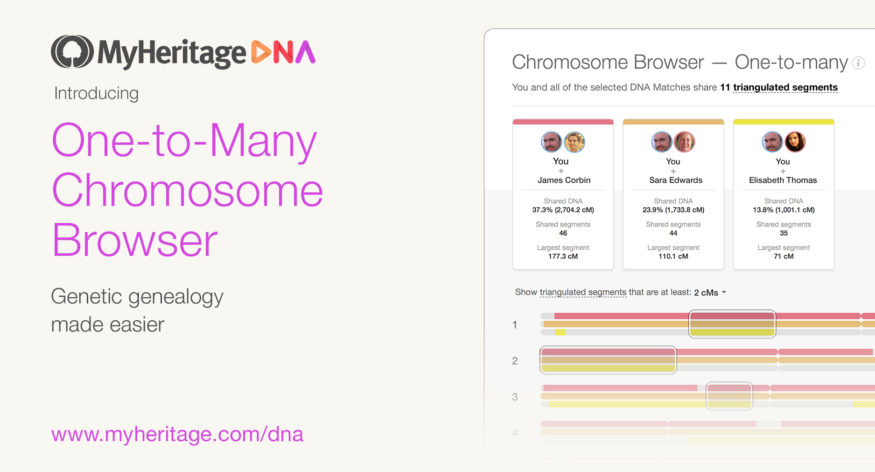

We are excited to announce a major upgrade to the Chromosome Browser on MyHeritage. With this upgrade, we’ve upped our genetic genealogy game considerably. If you have taken the MyHeritage DNA test, or uploaded your DNA data to MyHeritage, you can now become a genetic genealogist to better understand how you are related to your DNA Matches. Together with family tree details like shared ancestral surnames and shared Smart Matches, you may be able to trace back the common ancestors who passed down shared DNA segments to you and your DNA Matches, and reconstruct the exact relationship path between you and DNA Matches that intrigue you.
If you have not yet purchased a MyHeritage DNA test, order your kit here, or upload your DNA data to MyHeritage for free.
Overview
A chromosome browser is a tool that maps a person’s chromosomes graphically. Essentially it is used to visualize shared DNA segments that people who share DNA have in common. MyHeritage locates such shared segments when it analyzes your DNA results and determines that you are a match with someone else when there are sufficient shared segments of sufficient size between you. Such shared segments are a probable indication that you and your match both inherited DNA from one or more common ancestors. By studying those shared segments and testing the DNA of additional relatives, it is possible to determine who the segments originated from and in turn, determine the relationship between the two people who have taken the DNA test.
The initial version of the MyHeritage Chromosome Browser, released in January 2018, was a one-to-one chromosome browser. It displays DNA segments shared by you with one DNA Match, and is found at the bottom of the DNA Match Review page, for any DNA Match. You can read more about that basic version in our blog post.
Important notes about the Chromosome Browser
The first thing you might notice is that the Chromosome Browser shows 22 chromosomes whereas humans have in fact 23 pairs of chromosomes. The chromosome that is not visualized is the last and 23rd one, the sex chromosome, and more specifically the X chromosome. The X chromosome is inherited differently than the other chromosomes and requires special consideration by genealogists. Adding support for the X chromosome is planned on the MyHeritage product roadmap as a future improvement later in 2018.
It is also important to note that, like many similar tools, the chromosome browser on MyHeritage includes an important simplification. Each chromosome pair is represented on the browser by one visual bar, although in reality each of us has a pair of chromosomes, one inherited from our father and the other from our mother. When the chromosome browser shows a matching segment, it doesn’t say whether the match occurred on the maternal or the paternal instance of the chromosome, and whether the same segment for the person we match, is on their maternal or paternal instance. If a segment is shown not to match (in gray), it means neither the maternal or paternal chromosome at that section of DNA matched neither the maternal or paternal chromosome of the other person. That part is clear cut. But if a segment is shown to be a shared segment that both people have, you don’t see whether it is a maternal or paternal segment. In fact, it could be that the segment you are seeing is a combination of two or more mini-segments, some maternal and some paternal. This simplification has pros and cons. We are considering to provide the advanced option to view a “double” chromosome browser without this simplification, in the future.
New upgrade
The new Chromosome Browser released today is an improved version with more functionality. You still have access to the simple One-to-One Chromosome Browser at the bottom of the DNA Match Review page, to inspect each one of your DNA Matches. But there is now a new One-to-Many Chromosome Browser, that can be accessed from the DNA navigation menu as a standalone tool.
The new One-to-Many Chromosome Browser allows you to compare yourself (or any DNA kit that you manage) with up to seven DNA Matches at the same time, that you select. With the improved Chromosome Browser, you can explore which DNA segments you (or anyone whose DNA kit you manage) share with each of up to seven DNA Matches simultaneously. This is the most comprehensive Chromosome Browser available in the market today, and MyHeritage provides it for free!
Triangulated segments
MyHeritage is now also the first to give users, for free, the ability to easily review triangulated segments — segments that all of the selected DNA Matches share with each other. This capability is important for understanding DNA Matches’ relationships because triangulated segments are more likely to be inherited from a common ancestor. Every segment between two people is triangulated, but segments that seem to be shared by three or more people are not necessarily triangulated. For example, if you compare yourself with two people, call them A and B, you may see that you share a segment with A and you share a segment at the same genomic position with B, but A and B may not match each other on that segment. That’s because you may be sharing your maternal segment with A and your paternal segment with B, and A and B aren’t related to each other at all. If a match is shown as triangulated, it means that you, A, and B all match each other precisely on that segment, and therefore all of you are probably related, and you probably got that triangulated segment from the same common ancestor. Validating triangulation is complex, especially when comparing the DNA of a large group of people, and MyHeritage does it automatically for you behind the scenes.
Getting started
To navigate to the new standalone One-to-Many Chromosome Browser, select “Chromosome Browser” from the DNA menu.
The One-to-Many Chromosome Browser page will open. Next, select the main person you want to compare with his or her DNA Matches by clicking on the arrow next to “Compare”. You can choose yourself, or any of the people whose DNA kits you manage. If you have only one DNA kit, of yourself, then this part is pre-selected and involves no work on your part.
Now, build the comparison set. These are the DNA Matches you’d like to compare the main person to. Select at least one DNA Match, and at most up to seven, from the list of available DNA Matches displayed as detailed cards at the bottom of the page. Each DNA Match you select will appear on the top row. After you select a DNA Match to compare, his or her card at the bottom of the page will appear dimmed to help you keep track of which DNA Matches you’ve already selected.
If you change your mind after selecting a DNA Match, hover over the card in the top row and click the X to remove it.
The available DNA Matches are displayed at the bottom, sorted by shared DNA, meaning that more closely related people will be listed first. You can use the search facility to locate any specific match you’re looking for, if they are further down in the list and you don’t want to scroll manually to look for them. Then click that match to include it in the comparison set.
Tip: Select DNA Matches that you think might be related to each other, or are possibly from the same branch. For example, if you were looking at a DNA match between you and a person named John Smith, and the DNA Match Review page showed you that you and John both match another person named Samantha Miller, it would make sense to explore you, John and Samantha together in the One-to-Many Chromosome Browser, and check for the existence of triangulated segments.
Once you have selected all of the DNA Matches you want to include in the comparison set, click “Compare” and let the fun begin!
The One-to-Many Chromosome Browser in action
When you initiate a comparison, the Chromosome Browser springs into action.
The top of the page now displays one or more Match Cards with a colored bar on top, representing your match with each specific DNA Match you selected. Each Match Card reminds you of the DNA Match parameters between you and that person (shared DNA, number of shared segments, and the size of the largest segment).
Below, for each one of the 22 chromosomes, the DNA segments that you share with each one of the selected DNA Matches will appear in the same color as on the Match Card. The color coding helps you keep track of the various matches. Gray segments are not shared with the DNA Match and the small crisscrossed sections represent segments that were not analyzed due to a lack of DNA markers (SNPs) in those regions.
Triangulated segments
DNA segments indicated by a frame are triangulated segments — segments shared by all of the selected DNA Matches between each other. These segments were likely passed down to all of them by one or more common ancestors. Triangulated segments are exactly what you hope to find as they are a strong indication that all the people currently displayed in the Chromosome Browser are indeed descendants of the same common ancestor or ancestors. You might even know who the common ancestors are if your family tree goes back far enough. But if they are not in your tree you will need to extend your tree with more generations by doing more research and leaning new information from your DNA Matches who may have conducted some family history research on their side. You can often use the Chromosome Browser to understand how you are related to them and get the discussion going on the right foot by sharing this information with them. For example, telling them that you think you might be related via a certain ancestor called so-and-so, who lived in a certain period in a certain country. If that information rings a bell for your match, you’re in luck and on your way to making a valuable connection.
Sometimes you will see a region of DNA where all colored bars appear, but there is no triangulated segment indicated there. This means you share DNA segments at the same genomic position with multiple DNA Matches, but they do not share that segment with each other. As explained earlier, this is because each chromosome pair is represented by a simplified single stripe in the Chromosome Browser; there is no graphical differentiation between the chromosome within each pair that was inherited from the mother and the one that was inherited from the father. If you and one DNA Match share a segment on your maternal chromosome, and you and a different DNA Match share a segment at the same genomic location on the paternal chromosome, those two DNA Matches will likely not share a segment at that genomic location with each other, and they might even be unrelated to each other. In this case, that segment is not triangulated and will not be framed.
The example below shows an individual, her mother, and her father, all compared in the Chromosome Browser. As expected, this individual shares an entire chromosome in every chromosome pair with her mother, and an entire chromosome in every chromosome pair with her father, which is why the entire chromosome is indicated as a match for both parents. However, in this case the mother and father are not related by blood and do not share any DNA with each other. That’s why there are no triangulated segments, i.e. no framed segments in this example. An inexperienced user may assume that the mother and father are related, when this is not the case. Hence the importance of understanding and using triangulated segments.
When you hover your mouse over any shared DNA segment in a desktop browser, whether triangulated or not, you can review the genomic position of the shared segment, the size of the segment, and the number of SNPs there.
Advanced options
As the default, triangulated DNA segments that are at least 2 cMs in size will be indicated with a frame. You can increase this minimum threshold to 4, 6 or 8 cMs using the dropdown menu at the top of the page. Increasing the minimum size will result in displaying fewer triangulated DNA segments, however, there will be more confidence that those segments are evidence of descendance from a common ancestor, and are not “pile-up noise” caused by extremely distant ancestors.
Exporting segment information
There are some excellent third-party tools for visualizing DNA segments that you may want to use, such as DNA Painter. Or, you may want to view your matches manually or offline. For these purposes, we’re providing the ability to export segment information.
At the bottom of the One-to-Many Chromosome Browser, below the visual display of the chromosomes, there is a table with detailed information about the shared DNA segments with each DNA Match, and the triangulated segments that all of the selected DNA Matches share in common. You can copy this information to the clipboard, or click on “Advanced options” to export all of the information in the table and download it.
Note that although we’d never allow another user to download your raw DNA data, if another user has a shared segment with you and can view its details (position and size), then by reviewing that segment’s information on his or her own DNA, that other user can deduce the genotypes that you have in your DNA in that particular segment. Users who prefer to prevent other users who share their DNA segments from viewing the details of shared segments can opt out of this feature by using a new privacy setting that we have added for this purpose.
Testing more relatives
The Chromosome Browser illustrates the usefulness of testing the DNA of additional relatives. You can make particularly valuable discoveries when you triangulate known relatives from each side of your family (that you have asked to take a DNA test) together with previously unknown relatives.
It is best to start by testing your grandparents and parents, who are still living.
Why is this so important? Matches you’ll receive for your direct ancestors are also related to you, but your ancestors have more of your family’s original DNA than you have inherited from them, so you will have better chances of discovering relatives by testing your parents and grandparents than by relying on your own matches. As a best practice, we always recommend testing the elders in your family while you still can.
By testing more relatives, it will also become easier for you to utilize your own matches and understand their relationship path with you. If your grandparents are no longer alive, you can ask any of their living siblings or cousins to test. Beside your parents, it is also useful to test first cousins and second cousins of your parents.
As an example, suppose there is a branch in your family tree that particularly interests you, and you would like to learn more about it and discover more relatives from that branch. Suppose there is a second cousin of your mother still living from that branch, and he agrees to take a DNA test that you provide for him. Let’s assume the DNA results validate that this is indeed her second cousin and there are no surprises, so to speak. Now you have an excellent boost to your research. You can review your match with your mother’s second cousin and observe the shared matches – those matches that you and that person have in common. You can view them in the One-to-Many Chromosome Browser and look for triangulated segments. Finding a match that triangulates with you and your mother’s second cousin, means that you have found a relative that descends from your great-great-grandparents that are common ancestors of you and your mother’s second cousin. Or, it could be that it’s a more distant common ancestor, an ancestor of your great-great-grandparents. But now, among the thousands of DNA Matches that you may have on MyHeritage, you have pinpointed those in the particular branch of the family that interests you the most. You can get in touch with them, learn what they know about their family, and try to connect their family tree to yours. By testing additional family members, and with some experience and perseverance, and by using the tools for genetic genealogy that MyHeritage keeps improving, and the large DNA database on MyHeritage that grows daily by the thousands, you’ll be amazed at the discoveries you’ll be able to make.
New: Exporting the list of DNA Matches
We are taking advantage of this blog post to announce the release of another new feature, not related to the Chromosome Browser. Our user community requested this, and we listened. Users wanted the ability to export their entire list of DNA Matches conveniently, and we’re happy to oblige. Exporting the list of matches is useful for reviewing the list of matches manually, for example on a spreadsheet, or importing it to other tools. This capability is now available. On the DNA Matches page there is an “Advanced options” menu. There you can export your entire DNA Matches list. You can also export all of the shared DNA segment information for all DNA Matches at once from this menu. Selecting either of these options takes several minutes, so an email will be sent to you with an attached file containing the requested information.
Summary
The new One-to-Many Chromosome Browser, with its support for indicating triangulated segments, is an exciting addition to MyHeritage’s growing arsenal of useful tools for genetic genealogy. Now you can make more use and more sense of your DNA Matches. Best of all, this great tool is completely free.
Also new is the ability to export the list of DNA Matches, along with several other export capabilities.
We hope you will enjoy these features and use them to make exciting new discoveries.
We love to help our user community break through brick walls, trace their heritage, and understand how they are related to family members discovered through DNA Matching.
Stay tuned: We are working on additional great tools for genetic genealogy that will be released in the near future.
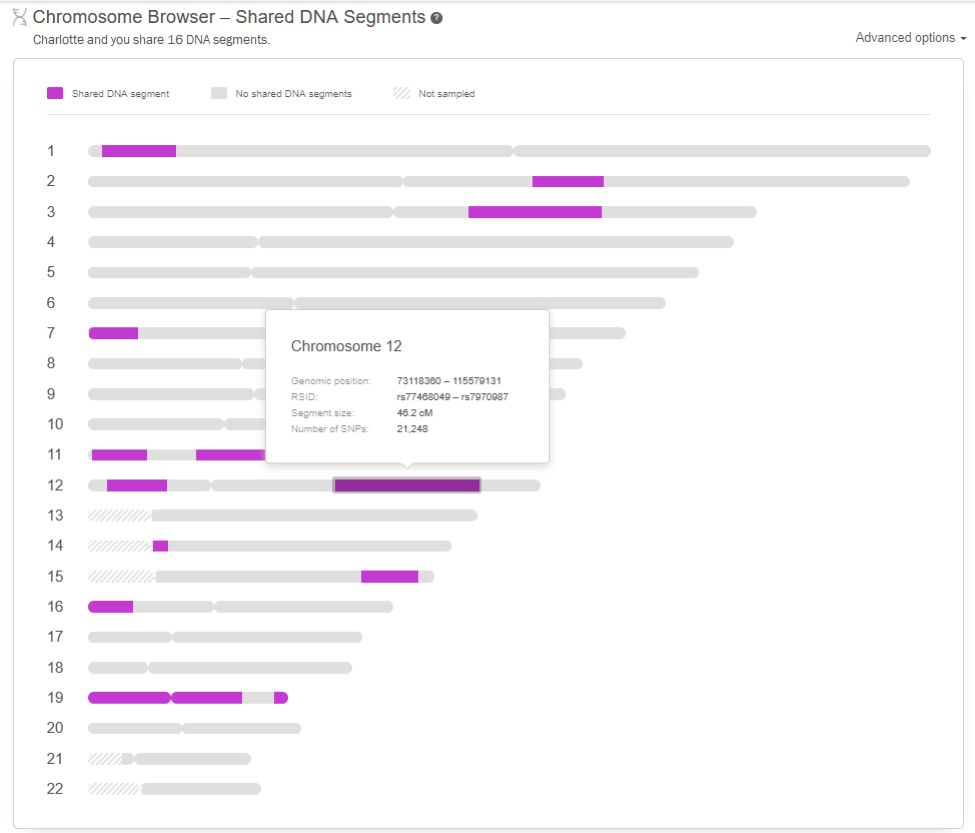
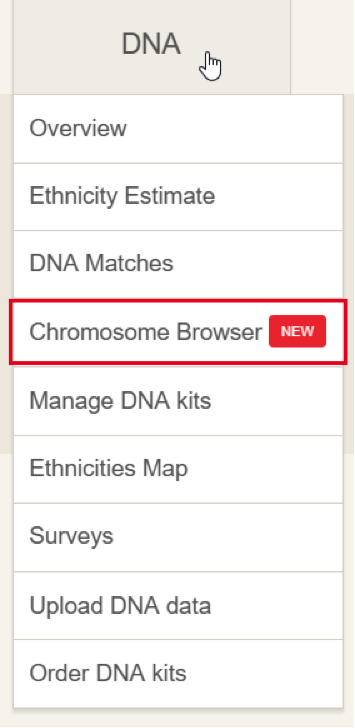



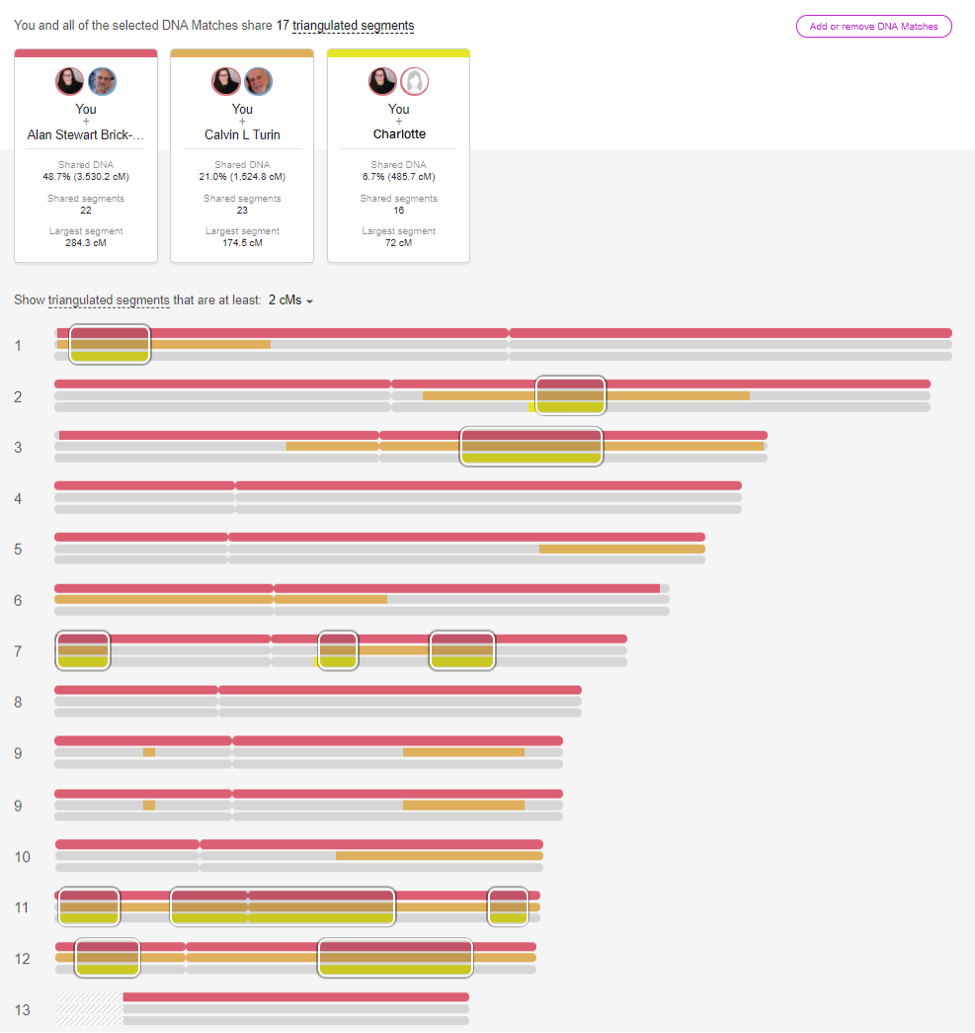

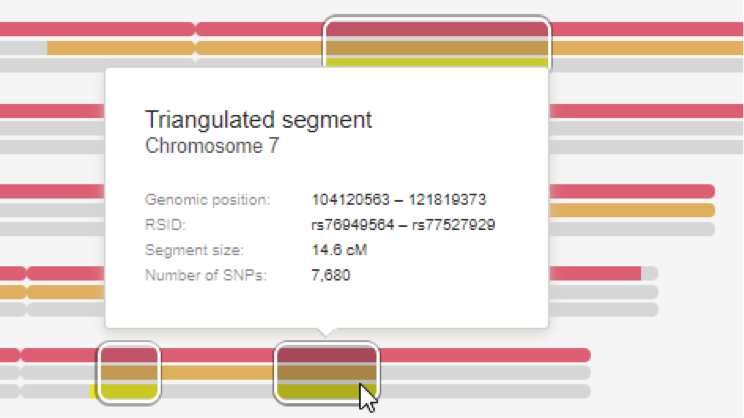
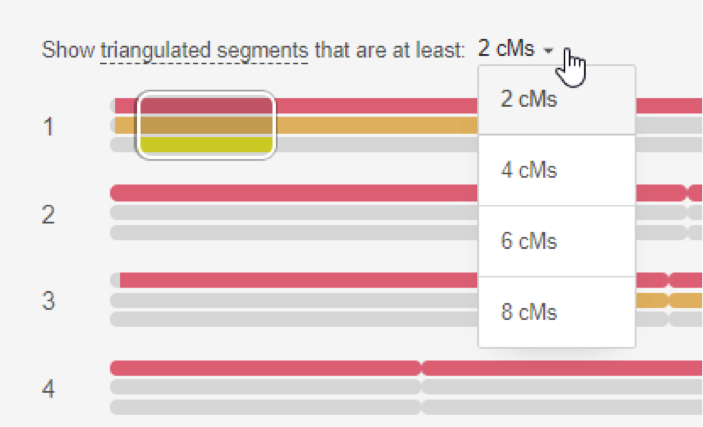
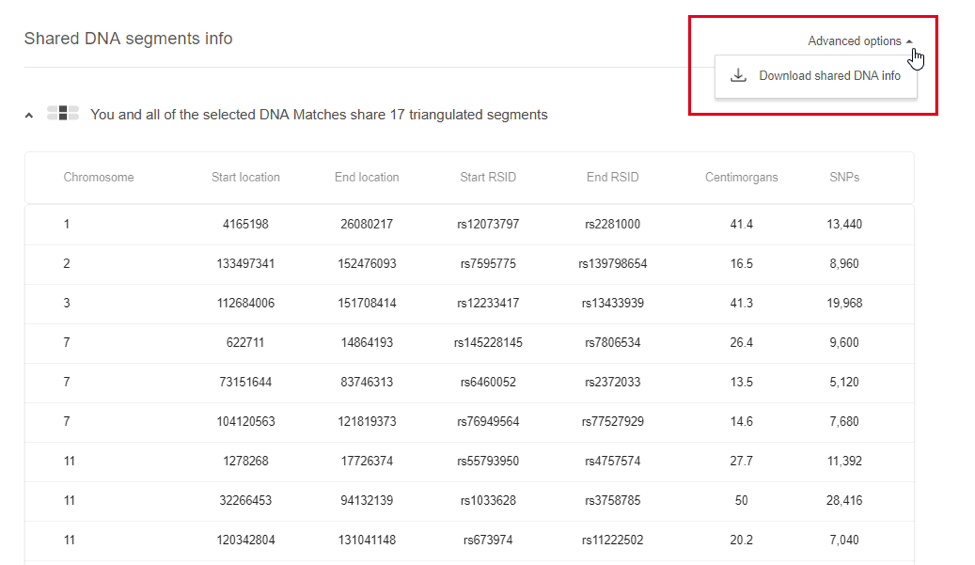
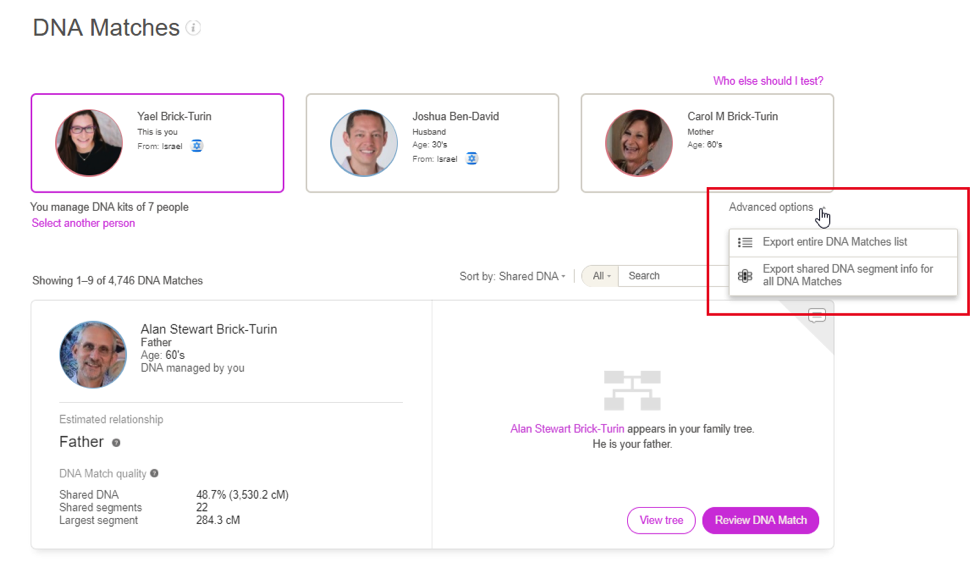

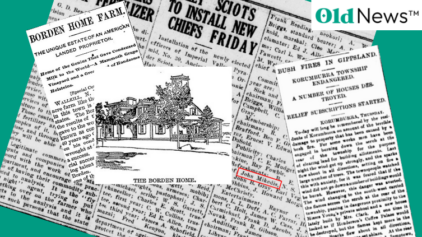
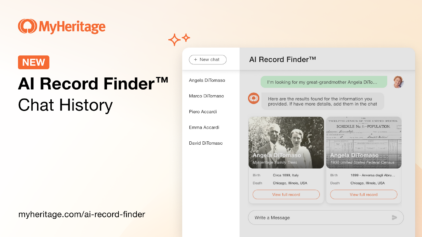
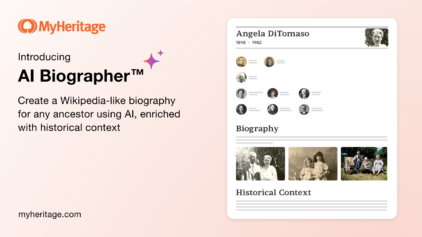
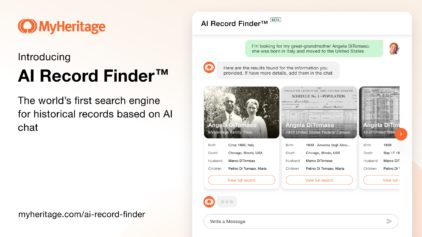

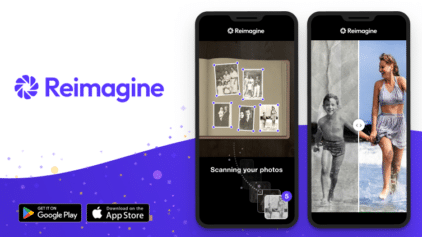
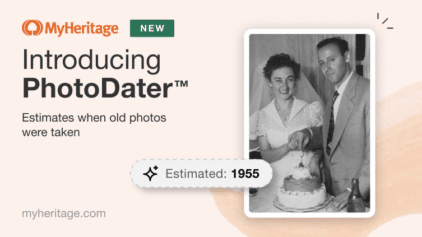

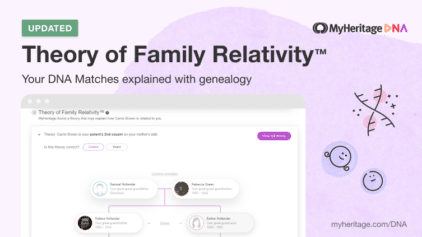
Louis Kessler
March 2, 2018
Fantastic! Yes, this is what we wanted and needed.
Don’t stop. Keep going!